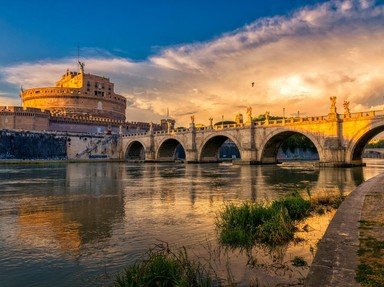Quiz Answer Key and Fun Facts
1. Center of religion, government, and business in a Roman municipium
2. Courthouse in a Roman municipium
3. Library in a Roman municipium
4. Public baths in a Roman municipium
5. Theater in a Roman municipium
6. Water channel in a Roman municipium
7. Religious building - home of the gods - in a Roman municipium
8. Large stadium in a Roman municipium
9. Wall for protection and defense surrounding a Roman municipium
10. Shop or restaurant in a Roman municipium
Source: Author
ponycargirl
This quiz was reviewed by FunTrivia editor
bloomsby before going online.
Any errors found in FunTrivia content are routinely corrected through our feedback system.
